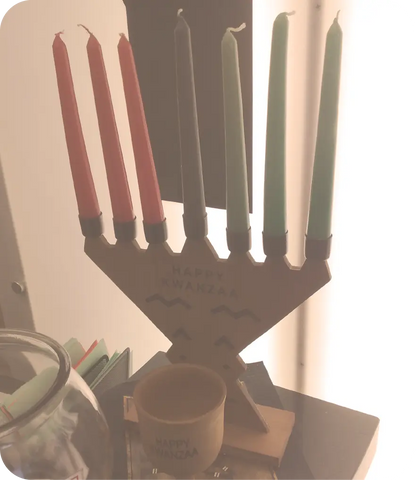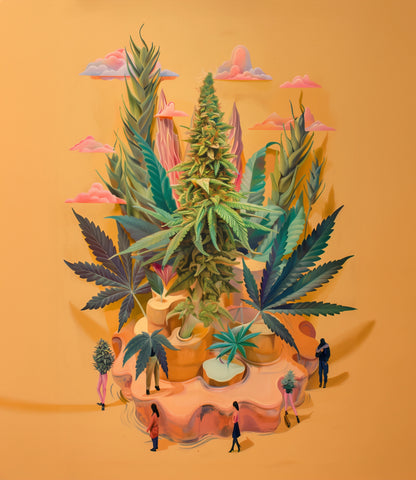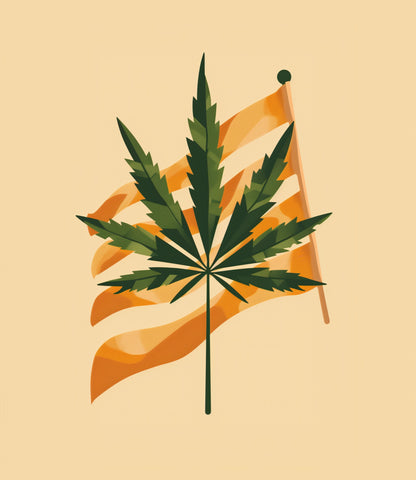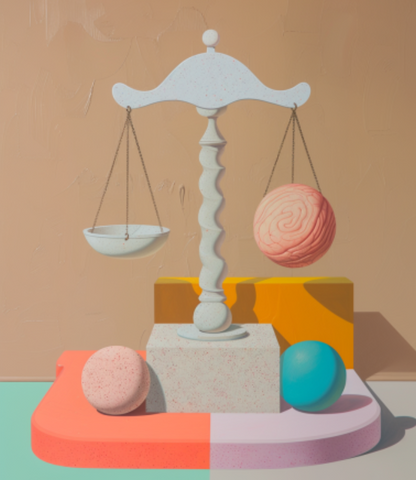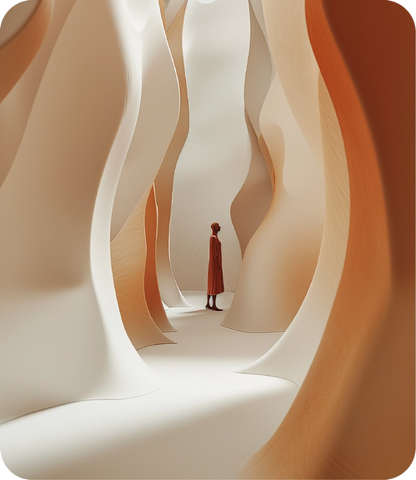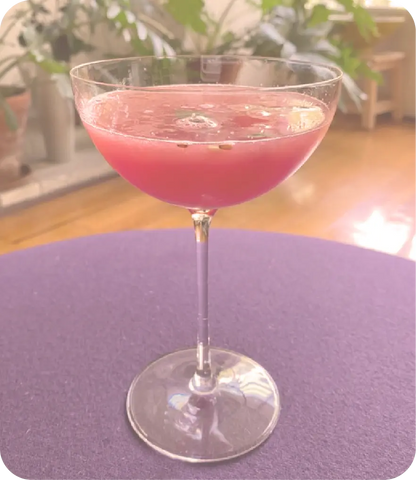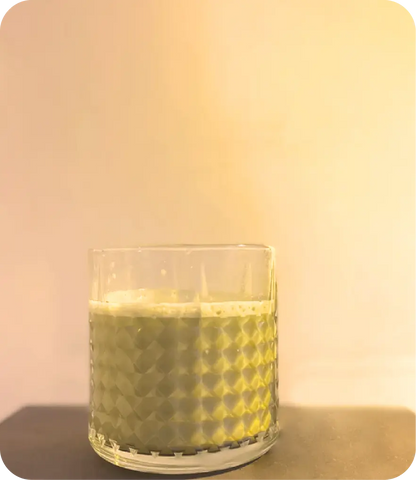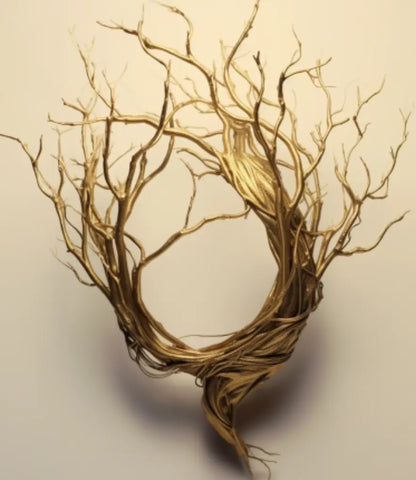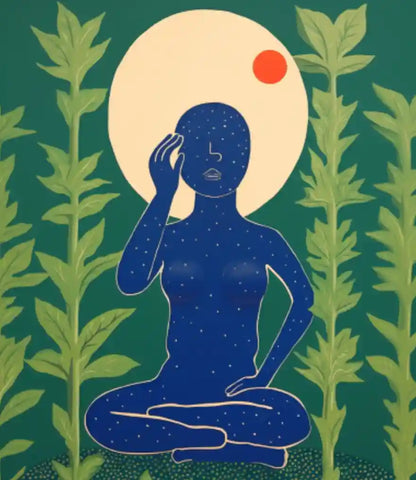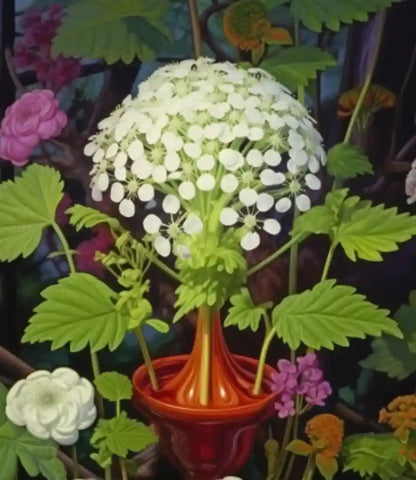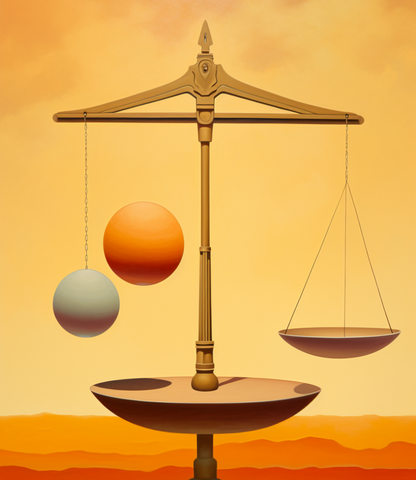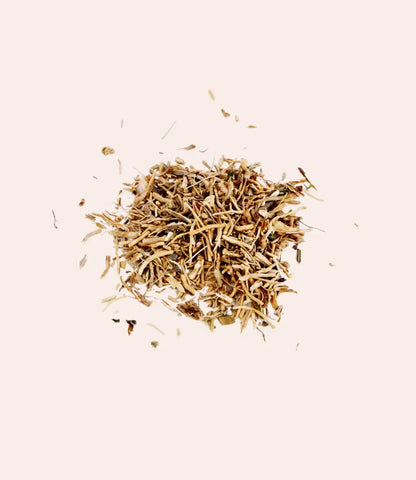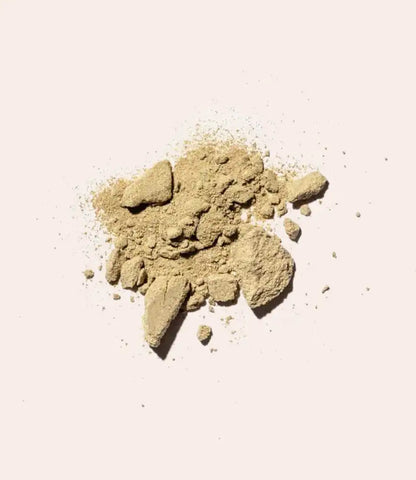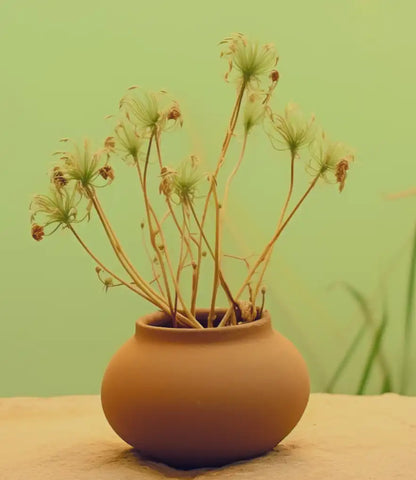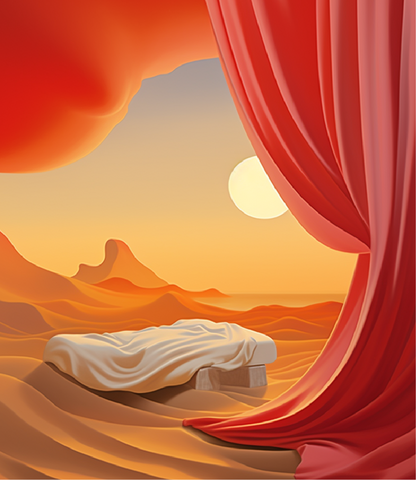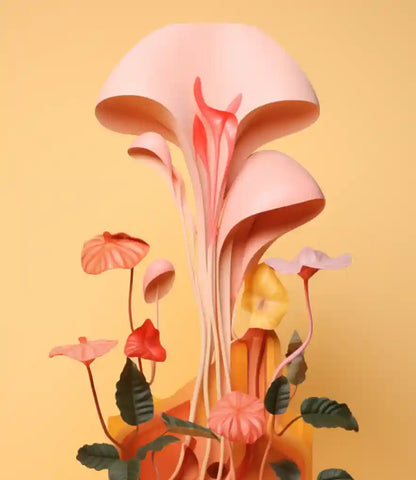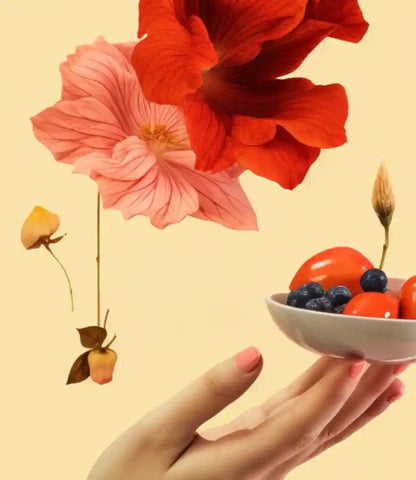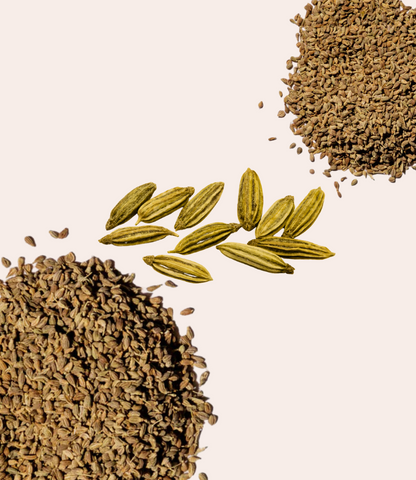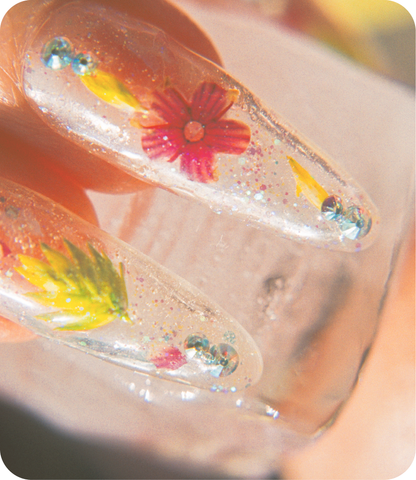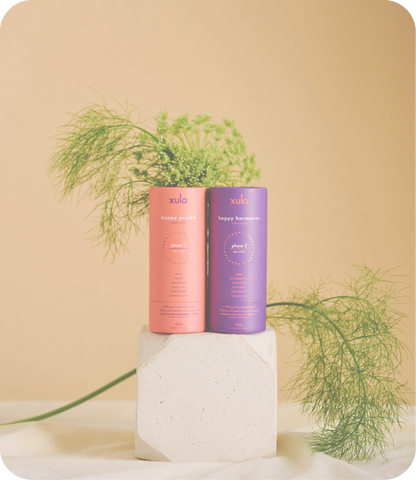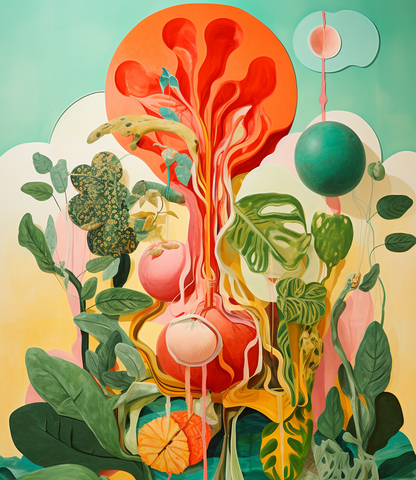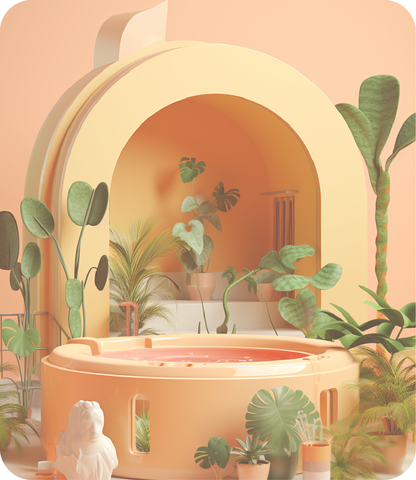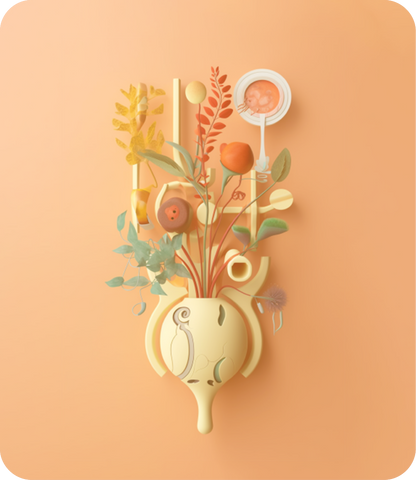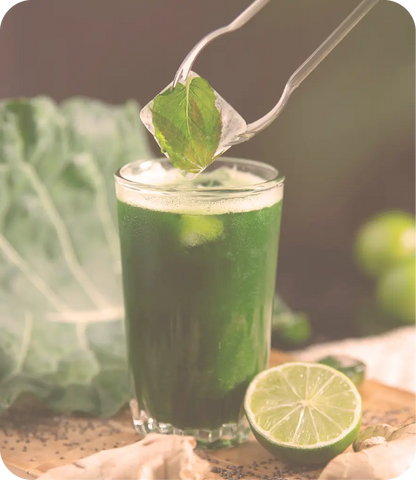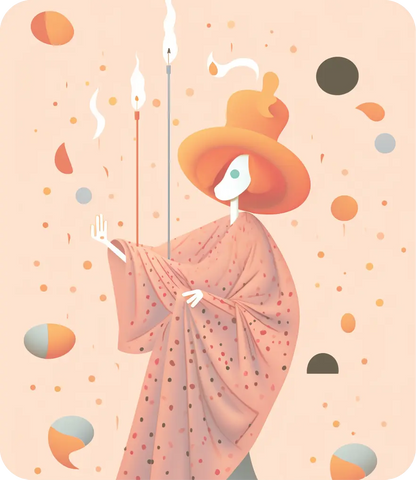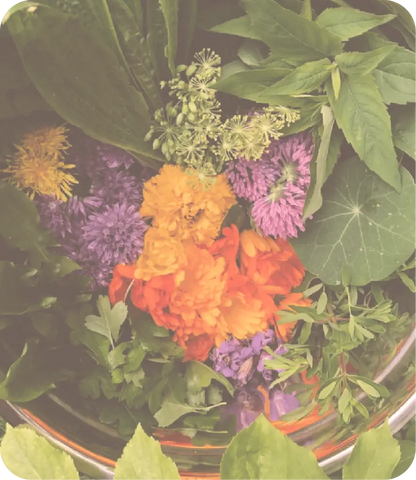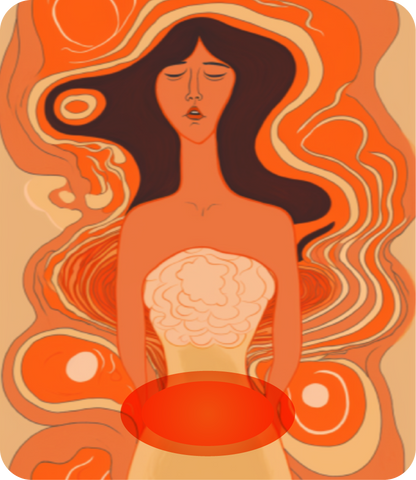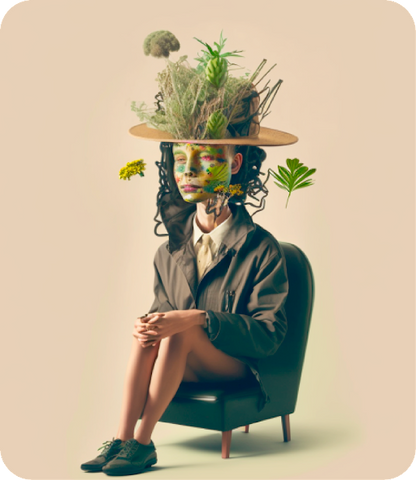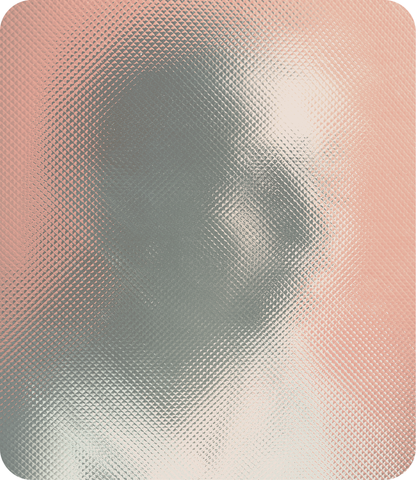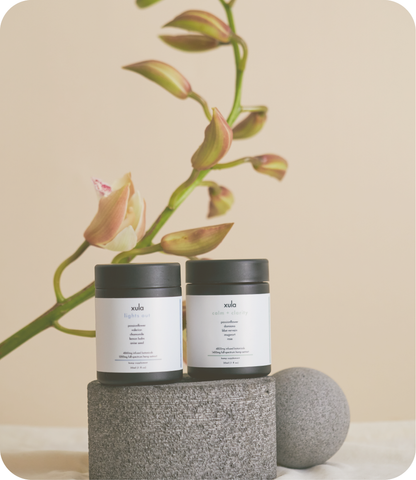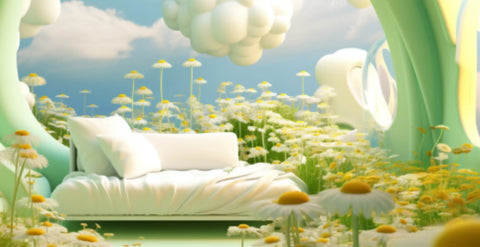
Chamomile: From Ancient Mysticism to Modern Marvels
Chamomile is widely considered one of the most ancestral medicinal herbs to humankind, as ancient as poems and minstrels, novels, theater, and narrators, as antique as stories themselves, so let me tell you the story of chamomile only as a storyteller would do.
Once upon a time, in the ancient lands of Egypt, Greece, and Rome, there grew a charming little flower known as chamomile. Its name originated from the Greek words "chamos" meaning ground and "milos" meaning apple, due to its delightful apple-like fragrance.
Egypt
Legend has it that the ancient Egyptians revered chamomile for its mystical properties and often used it in their religious ceremonies. The flower was associated with the sun god Ra, symbolizing healing and protection.
The ancient Egyptians were captivated by chamomile's alluring fragrance and its association with the sun god Ra. They believed that chamomile possessed powerful properties that could connect them to the divine realm and grant protection from malevolent forces.
One of the most common uses of chamomile in ancient Egypt was in the form of essential oil. The Egyptians would extract the fragrant oil from the chamomile flowers and use it in perfumes, cosmetics, and aromatic oils for massages and rituals. This practice enhanced their spiritual experiences and elevated their senses.
Moreover, chamomile was highly regarded for its medicinal qualities. The Egyptians harnessed t healing powers to treat various ailments. They would brew chamomile tea to soothe digestive discomfort, relieve headaches, and alleviate anxiety or stress. It was believed to have a calming effect on both the body and mind.
Chamomile's connection to the sun and its resemblance to the solar disk led the ancient Egyptians to associate it with rejuvenation and eternal life. It was often included as an ingredient in funerary rites, helping the departed transition to the afterlife. The chamomile's essence played a role in guiding the souls on their journey, providing them with comfort and protection as they crossed into the realm of the gods.
Beyond its spiritual and medicinal uses, chamomile also found its way into various beauty practices. The ancient Egyptians valued chamomile-infused oils and creams for their soothing effects on the skin. These preparations were often used in religious ceremonies and daily beauty routines.
Greece and Rome
As time passed, chamomile's reputation as a magical herb spread across the Mediterranean. In the enchanting world of ancient Greece and Rome, chamomile held a special place in the hearts of the people, cherished for its delightful aroma and its multifaceted uses.
Both the ancient Greeks and Romans referred to the flower as "Matricaria," meaning "mother's best friend," acknowledging its nurturing qualities and its ability to provide comfort and relief.
Medicinal uses of chamomile were widespread among the Greeks and Romans, and just like the ancient Egyptians, they brewed chamomile tea, tinctures, and extracts to treat various health conditions. Chamomile was especially valued for its digestive properties, often used to ease stomach ailments, such as indigestion, bloating, and colic.
Chamomile was also valued for its antiseptic properties. It was used to cleanse wounds, promote healing, and prevent infections. Poultices made from chamomile flowers were applied to wounds and bruises, helping to soothe pain and accelerate the healing process.
In addition to its medicinal uses, chamomile held a prominent place in the rituals and customs of the ancient Greeks and Romans. They would adorn statues of gods and goddesses with chamomile garlands, believing it would invoke divine blessings and favor.
Furthermore, chamomile's gentle fragrance made it a popular choice for perfumes and scented oils used in bathhouses. Its calming aroma added to the sensory pleasure of the bathing experience, enhancing relaxation and well-being.
Medieval Times
In medieval times, chamomile continued to enchant the people. Herbalists and healers incorporated it into their natural remedies, believing it could ward off evil spirits and promote overall well-being they also recognized its therapeutic potential and incorporated it into various remedies to treat a wide array of ailments. Chamomile tea remained a popular choice to soothe digestive issues, such as upset stomachs and bloating.
Furthermore, chamomile's allure extended to the realm of superstitions and folklore. It was believed that chamomile possessed protective qualities, and people would hang chamomile over doorways or carry it as a charm to ward off negative energies and evil spirits.
In medieval gardens, chamomile was cultivated alongside other herbs, flowers, and vegetables. Its presence was believed to enhance the growth and well-being of neighboring plants, acting as a companion plant that naturally repelled pests and improved soil health.
Chamomile's prominence in medieval times was also reflected in its appearance in literature and art. It was often depicted in illuminated manuscripts and herbal books of the era, showcasing its importance in the cultural landscape.
Actual
Thus, chamomile weaved itself into the fabric of ancient cultures, Its influence has endured the test of time, and even today, chamomile continues to be cherished and valued for its myriad uses.
- Herbal Tea: Chamomile tea is one of the most popular and well-known uses of chamomile. It is enjoyed for its calming and soothing properties, making it an excellent beverage to help relax the mind and promote better sleep.
- Relief from Digestive Discomfort: Chamomile is known for its carminative properties, which means it can help alleviate gas, bloating, and indigestion. Drinking chamomile tea after meals may aid in digestion and reduce discomfort.
- Promoting Sleep: Due to its calming effects, chamomile tea is often used as a natural remedy for insomnia and sleep disturbances. It can help relax the body and mind, making it easier to fall asleep.
- Skincare: Chamomile's anti-inflammatory and antioxidant properties make it a beneficial ingredient in skincare products. It can help soothe irritated skin, reduce redness, and promote a healthy complexion.
- Wound Healing: Chamomile's antiseptic properties can aid in wound healing and prevent infections. It can be applied topically as a compress or added to creams and ointments.
- Stress and Anxiety Relief: Chamomile tea is often used as a natural remedy to reduce stress and anxiety. Its calming properties can help ease tension and promote relaxation.
- Menstrual Relief: Some people find chamomile tea helpful in easing menstrual cramps and discomfort during their menstrual cycle.
- Hair Care: Chamomile can be used in hair rinses to add shine and enhance natural highlights in blonde or light-colored hair.
- Insect Repellent: The strong aroma of chamomile can act as a natural insect repellent, helping to keep certain pests away.
- Aromatherapy: Chamomile essential oil is used in aromatherapy to promote relaxation, reduce stress, and uplift the mood.
It's essential to note that while chamomile is generally safe for most people, some individuals may be allergic to it or experience interactions with certain medications. It's always best to consult with a healthcare professional before using chamomile for medicinal purposes, especially if you have any existing health conditions or are taking medications.
So, the tale of chamomile continues, an ancient flower cherished for its beauty, fragrance, and the soothing touch it lends to weary souls throughout the ages. May its story forever blossom, carrying the wisdom of the past into the future.
Energetics: Drying, Sweet, Aromatic, Gentle
Actions: Relaxant, Soothing, Antispasmodic (Relaxes spasms & cramps), Nervine (calms nerves) Carminative (Relieving cramping and expelling gas), Anti-inflammatory, Anti-Fungal
Found In: Lights Out (drops) and Lights Out (softgels)
Sources
K. Srivastava, E. Shankar, and S. Gupta. (Chamomile: A herbal medicine of the past with a bright future. Molecular Medicine Reports. 2010 Nov 1; 3(6): 895–901.
Forster HB, Niklas H, Lutz S. Antispasmodic effects of some medicinal plants. Planta Med. 1980;40:309–319
McKay DL, Blumberg JB. A review of the bioactivity and potential health benefits of chamomile tea (Matricaria recutita L.) Phytother Res. 2000;20:519–530.
(n.d.). A BRIEF HISTORY OF CHAMOMILE FOR WELLBEING. Alice England. https://www.aliceengland.com/blog/a-brief-history-of-chamomile-for-wellbeing/#:~:text=It's%20said%20that%20the%20earliest,dry%2C%20harsh%20weather%20(ref.
(n.d.). THE HISTORY OF CHAMOMILE TEA. Wise Ape Tea Co. https://www.wiseapetea.com/blogs/knowledge/the-history-of-chamomile-tea
